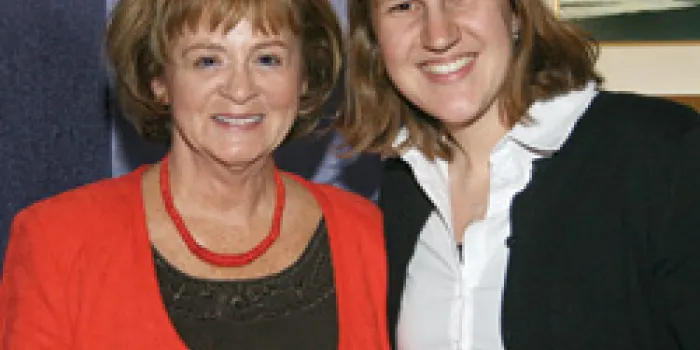In each issue of HemAware, we “Take 5” with people in the bleeding disorders community and spotlight their efforts with just five questions. Here, we talk to Danielle Schwager, 23, a member of the Women’s Task Force of the Northern Ohio Hemophilia Foundation (NOHF). In the fall she will be attending Kent State University where she will pursue a master’s degree in higher education administration and student personnel.
Tell me about the task force.
The Women’s Task Force of NOHF was founded in 2007 by women who believed there were some issues about women and bleeding disorders that needed to be addressed.
What does the task force do?
Our goal is to raise awareness and create better treatment options for women with bleeding disorders. There is still a misconception among doctors that women cannot have bleeding disorders, especially hemophilia. Because of this, some women suffer for years before being diagnosed, if at all. I am a carrier, and it took 11 years for me to receive a diagnosis of mild hemophilia B (factor IX deficiency).
Why is it important to share this information?
Studies have reported that roughly 27% of all female carriers of hemophilia have clotting factor levels low enough that, if they were male, would be diagnosed as mild to severe hemophilia.
Women can have symptoms similar to those of men, such as easy bruising, frequent nosebleeds and heavy, prolonged bleeding after surgery. However, women have other bleeding issues—in particular, heavy menstrual bleeding. These symptoms are sometimes ignored by physicians and the women themselves. Some women even undergo hysterectomies to control their bleeding, unaware that they have a bleeding disorder and that there are other treatment options available.
How does the task force spread its message?
 We host several programs at different events. For example, at the NOHF annual meetings in 2008 and 2009, there were informational and discussion sessions about issues concerning women and bleeding disorders.
We host several programs at different events. For example, at the NOHF annual meetings in 2008 and 2009, there were informational and discussion sessions about issues concerning women and bleeding disorders.
We also produce publications. As part of my senior project at Hiram College in Ohio, I worked with the Women’s Task Force and NOHF to create a brochure about women and bleeding disorders. The intent was to provide concise educational information to individuals in the medical community, as well as those affected by bleeding disorders. The brochure provides not only symptoms and personal stories but also information about treatment centers and organizations in Northeastern Ohio that can provide help.
How did you create and distribute the brochure?
The first step was compiling information. I spoke with nurses at the hemophilia treatment center (HTC) at University Hospitals of Cleveland. They made sure the medical information was accurate. Next, I pulled together general facts about bleeding disorders and symptoms specific to women. Lastly, Mary Ann Kerr, one of the founding members of the Women’s Task Force, provided some additional information and put it all together.
The brochure was distributed at the first Hemophilia Walk held in Berea, Ohio, in 2008. It has since been distributed at the 2009 Walk and the 2008 and 2009 NOHF annual meetings. Nurses at the HTCs in Akron and Cleveland, Ohio, have distributed the brochure to patients. We’ve also reached out to women in the Amish community in Northeastern Ohio. Since the brochure’s distribution, women have begun contacting NOHF seeking more information and involvement in the organization.

